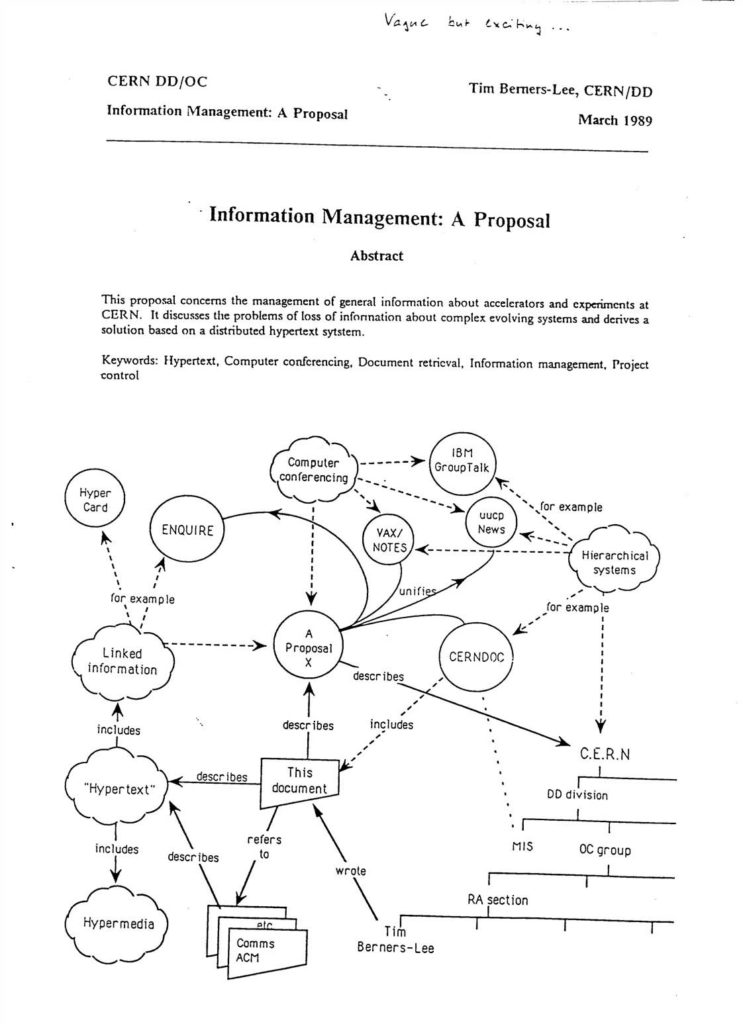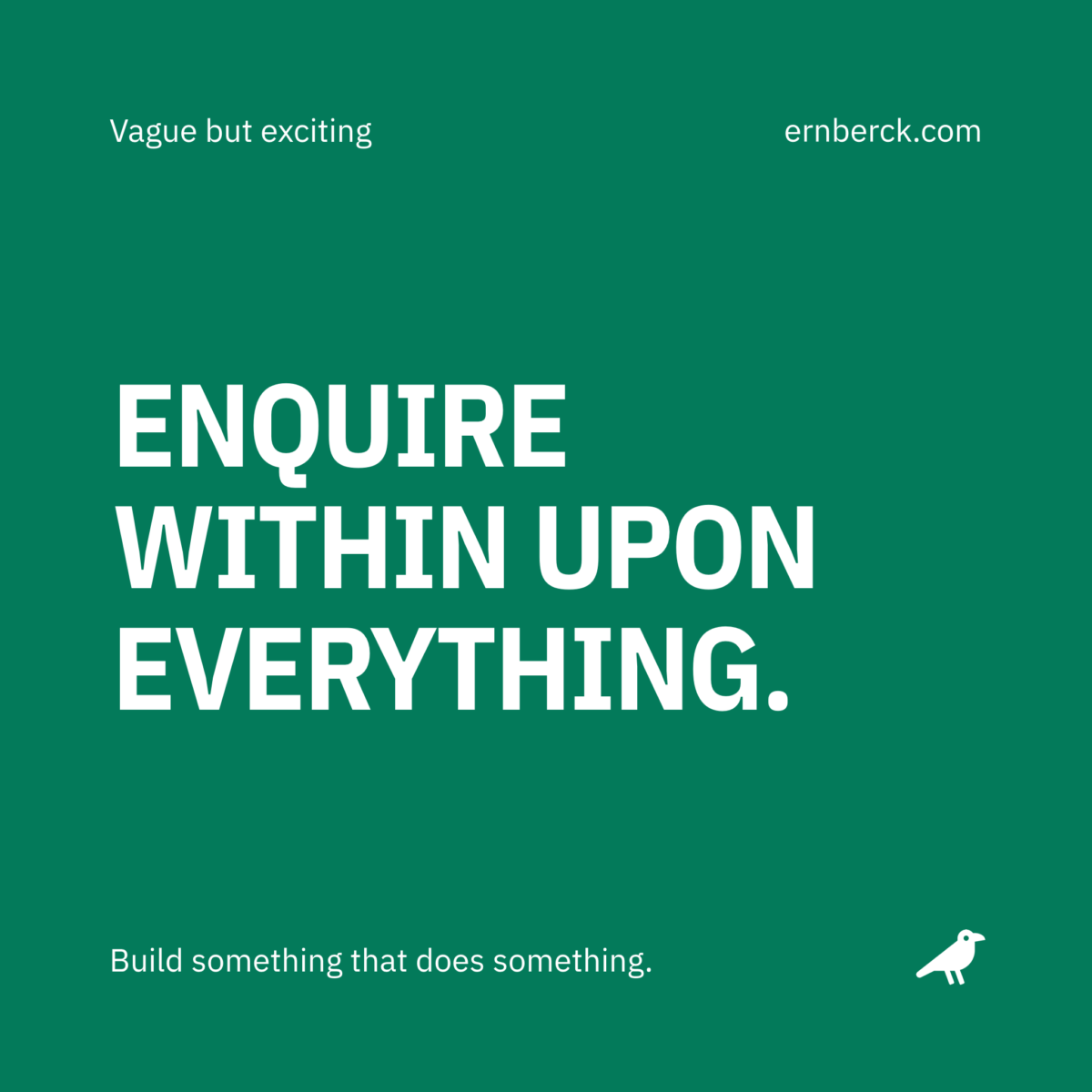The dawn of the World Wide Web
Have you ever wondered about the origin of the World Wide Web? The passages below are from an online book (see below) by Jeremy Keith. He can explain it far more eloquently — and with much more authority — than I could. Enjoy.
Complex machinery
Right now humanity’s most precise experiments are being conducted beneath the border between Switzerland and France. This is the home of CERN, the European Organisation for Nuclear Research.
In the 16‐mile wide ring of its Large Hadron Collider (LHC), protons are being smashed together at velocities approaching the speed of light. Our primate species is recreating the conditions from the start of our universe. The LHC is the most complex piece of machinery that has ever been built.
The awe‐inspiring engineering of the LHC is matched by the unprecedented levels of international co‐operation behind CERN. The particle accelerator became operational in the first decade of the 21st century but the groundwork was laid more than half a century before.
The CERN Convention
In 1954 a group of nations came together to create the CERN Convention, dedicating resources and money towards pure scientific research. The only return on investment they expected was in the currency of knowledge.
This groundwork created a unique environment free from the constraints of national, economic, and social hierarchies. Nobel prize‐winning physicists collaborate with students on summer internships. If there is an element of social categorisation at CERN, it is only between theorists and experimentalists.
The theorists are the ones with blackboards in their offices. The experimentalists are the ones with computers. They have to deal with a lot of data. Even before the Large Hadron Collider was switched on, managing information was a real challenge at CERN.

Sir Tim Berners-Lee
“The fight for the web is one of the most important causes of our time. Today, half of the world is online. It is more urgent than ever to ensure that the other half is not left behind offline, and that everyone contributes to a web that drives equality, opportunity, and creativity.”
Tim Berners‐Lee
Enter Tim Berners‐Lee, a computer scientist from England who found himself working at CERN in the 1980s. At the beginning of that decade, he started a personal project to get to grips with managing information. The resulting software was called ENQUIRE, named for a Victorian manual of domestic life called Enquire Within Upon Everything.
By the end of the ’80s, Tim Berners‐Lee was ready to tackle the thorny problem of information management on a larger scale. In order to get buy‐in at CERN, he produced an unassuming document with the title Information Management: A Proposal (see below).
Fortunately his supervisor, Mike Sendall, recognised the potential of the idea and gave the go‐ahead by scrawling the words “vague but exciting” across the top of the paper. That proposal would become the World Wide Web.
March 1989

Resilient Web Design

The passages above are from a free online book named Resilient Web Design. It was written in December 2016 by Jeremy Keith, a well-respected web developer and author who lives in Brighton, England.
The book is about websites — Where they came from, how they work, how they’re built, and where they’re headed. It’s not a technical manual. Nor is it yet another whiney critical essay about the Web. It’s more like a short history book with some philosophy thrown in.
It’s entertaining, wonderfully written, and easy to understand. It should be required reading for anyone who builds websites for a living. Or anybody who uses the web, for that matter.
Sources
- Resilient Web Design by Jeremy Keith
- Adactio
- Wikipedia: World Wide Web
